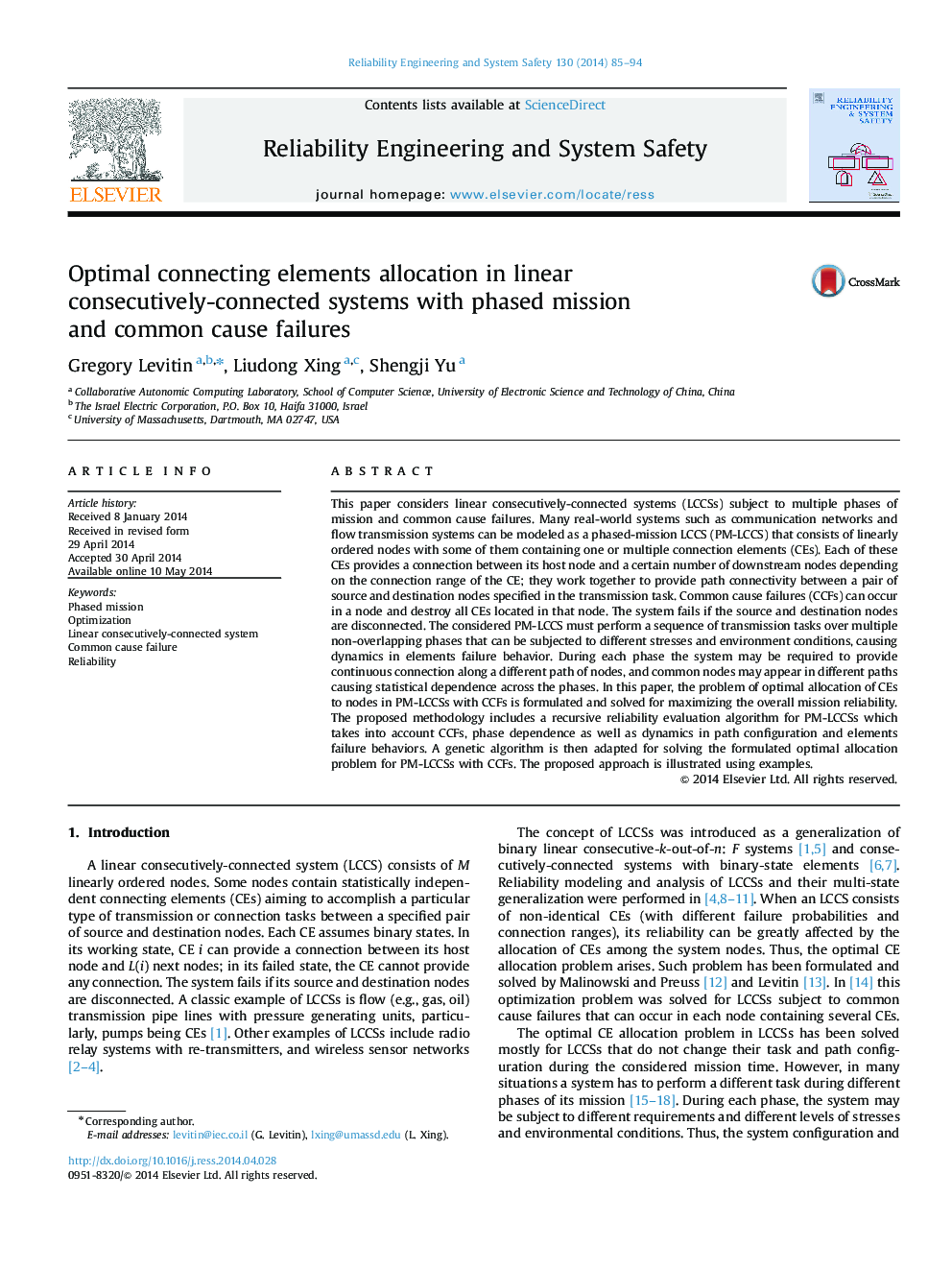| Article ID | Journal | Published Year | Pages | File Type |
|---|---|---|---|---|
| 807924 | Reliability Engineering & System Safety | 2014 | 10 Pages |
•Multi-phase linear consecutively-connected systems with CCF are studied.•Optimal connecting element allocation problem is solved.•The benefit of locating several connecting element at the same node is demonstrated.•The effect of common cause failures on the optimal allocation is analyzed.
This paper considers linear consecutively-connected systems (LCCSs) subject to multiple phases of mission and common cause failures. Many real-world systems such as communication networks and flow transmission systems can be modeled as a phased-mission LCCS (PM-LCCS) that consists of linearly ordered nodes with some of them containing one or multiple connection elements (CEs). Each of these CEs provides a connection between its host node and a certain number of downstream nodes depending on the connection range of the CE; they work together to provide path connectivity between a pair of source and destination nodes specified in the transmission task. Common cause failures (CCFs) can occur in a node and destroy all CEs located in that node. The system fails if the source and destination nodes are disconnected. The considered PM-LCCS must perform a sequence of transmission tasks over multiple non-overlapping phases that can be subjected to different stresses and environment conditions, causing dynamics in elements failure behavior. During each phase the system may be required to provide continuous connection along a different path of nodes, and common nodes may appear in different paths causing statistical dependence across the phases. In this paper, the problem of optimal allocation of CEs to nodes in PM-LCCSs with CCFs is formulated and solved for maximizing the overall mission reliability. The proposed methodology includes a recursive reliability evaluation algorithm for PM-LCCSs which takes into account CCFs, phase dependence as well as dynamics in path configuration and elements failure behaviors. A genetic algorithm is then adapted for solving the formulated optimal allocation problem for PM-LCCSs with CCFs. The proposed approach is illustrated using examples.
